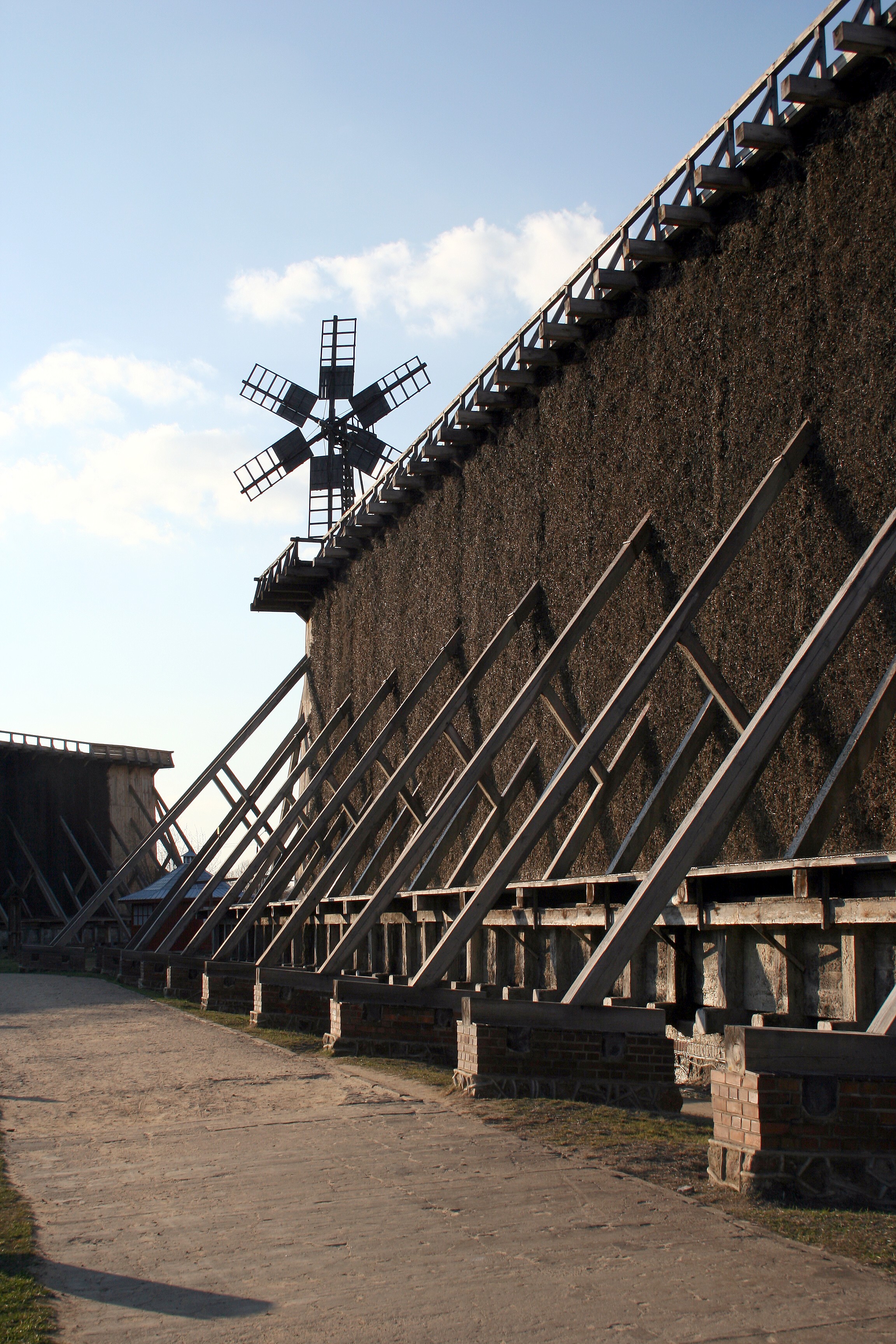Ciechocinek Graduation Towers on:
[Wikipedia]
[Google]
[Amazon]
 The Ciechocinek graduation towers are a complex of three brine graduation towers, erected in the nineteenth century in
The Ciechocinek graduation towers are a complex of three brine graduation towers, erected in the nineteenth century in
File:Ciechocinek2.jpg, Graduation tower no. 3
File:Ciechocinek1.jpg, Graduation tower no. 1
File:Ciechocinek3.jpg, Graduation tower no. 2
Ciechocinek
Ciechocinek (Polish pronunciation: ; German language, German (1941-1945): ''Hermannsbad'') is a spa town in Kuyavian-Pomeranian Voivodeship, north-central Poland, located on the Vistula River about east of Aleksandrów Kujawski and south-east of ...
, in the Kuyavian-Pomeranian Voivodeship
Kuyavian-Pomeranian Voivodeship, also known as Cuiavian-Pomeranian Voivodeship or simply Kujawsko-Pomorskie, or Kujawy-Pomerania Province ( pl, województwo kujawsko-pomorskie ) is one of the 16 voivodeships (provinces) into which Poland is divide ...
, Poland. They constitute the largest wooden structure of this type in Europe. The complex of graduation towers and salt breweries, together with two surrounding parks, are designated as a Historic Monument
A monument is a type of structure that was explicitly created to commemorate a person or event, or which has become relevant to a social group as a part of their remembrance of historic times or cultural heritage, due to its artistic, his ...
.
History
The towers were designed by Jakub Graff, professor of the Mining Academy in Kielce, based on the brine sources discovered here back in the second half of the eighteenth century, although the local community extracted and brewed salt as early as in the thirteenth century under the permissions given by Konrad I Mazowiecki. The graduation tower I with a capacity of and the graduation tower II with a capacity of , were built between 1824 and 1828. The graduation tower III with a capacity of , was built in 1859. The base of the towers is made up of 7000 oak piles driven into the ground, on which a spruce-and-pine structure planted withblackthorn
''Prunus spinosa'', called blackthorn or sloe, is a species of flowering plant in the rose family Rosaceae. The species is native to Europe, western Asia, and regionally in northwest Africa. It is locally naturalized in New Zealand, Tasmania, ...
was placed, where brine flows. The towers are arranged in the shape of a horseshoe with a total length of ; each is high. The brine with a concentration of 5.8% is pumped a depth of in spring No. 11 (the so-called Grzybek fountain) into dedicated channels at the top of the graduation towers. The brine seeps on the walls of the towers, on the blackthorn, and evaporates under the influence of wind and sun, creating a microclimate rich in iodine, sodium
Sodium is a chemical element with the symbol Na (from Latin ''natrium'') and atomic number 11. It is a soft, silvery-white, highly reactive metal. Sodium is an alkali metal, being in group 1 of the periodic table. Its only stable ...
, chlorine
Chlorine is a chemical element with the symbol Cl and atomic number 17. The second-lightest of the halogens, it appears between fluorine and bromine in the periodic table and its properties are mostly intermediate between them. Chlorine i ...
and bromine
Bromine is a chemical element with the symbol Br and atomic number 35. It is the third-lightest element in group 17 of the periodic table ( halogens) and is a volatile red-brown liquid at room temperature that evaporates readily to form a simi ...
, thanks to which a natural healing inhalatorium developed.
The towers are the second stage in the salt production process, where the brine concentration is gradually increased. The smallest concentration occurs at tower No. I (9%); the brine concentration increases at tower No. III (16%) and becomes greatest at tower No. II (30%). From the latter, the brine flows in pipelines to the salt-brewing plant (the third stage of salt production) where salt, sludge and therapeutic lye are produced. The first stage in the process of salt production is pumping brine from the source No. 11 "Grzybek fountain". The graduation towers also act as a giant air filter. In 1996, radioactive caesium isotopes (Cs-134 and Cs-137) from the Chernobyl nuclear power plant disaster (1986) were detected in the sludge and salt from the towers; however, their concentration in these products did not pose a threat to human health.
In 2017, the complex of graduation towers and salt breweries, together with the Tężniowy and Zdrojowy parks, was entered on the list of Historic Monuments.
In 2019, the Ciechocinek Health Resort obtained PLN 15 million from European funds for the renovation of the graduation towers (total cost of the project: 21.6 million). The project "Modernization and extension of the infrastructure of the graduation tower complex in Ciechocinek" includes renovation of tower No. I (replacement of blackthorn
''Prunus spinosa'', called blackthorn or sloe, is a species of flowering plant in the rose family Rosaceae. The species is native to Europe, western Asia, and regionally in northwest Africa. It is locally naturalized in New Zealand, Tasmania, ...
), tower No. III (general overhaul: replacement of structural elements and reinforcement of foundations) and the brine-pumping-station building, as well as paths and areas near the towers and the pumping station. Gardening work will also be carried out, and an installation to illuminate the towers at night will be constructed. The work, scheduled from March 2020 to December 2021,{{Cite web, last=, first=, date=, title=Tężnie w Ciechocinku do remontu. Za prawie 22 mln zł, url=https://bydgoszcz.wyborcza.pl/bydgoszcz/7,48722,25759757,teznie-w-ciechocinku-do-remontu-za-prawie-22-mln-zl.html, url-status=live, archive-url=https://web.archive.org/web/20200615174941/https://bydgoszcz.wyborcza.pl/bydgoszcz/7,48722,25759757,teznie-w-ciechocinku-do-remontu-za-prawie-22-mln-zl.html , archive-date=2020-06-15 , access-date=, website=, language=pl started with tower No. III.
Gallery
References